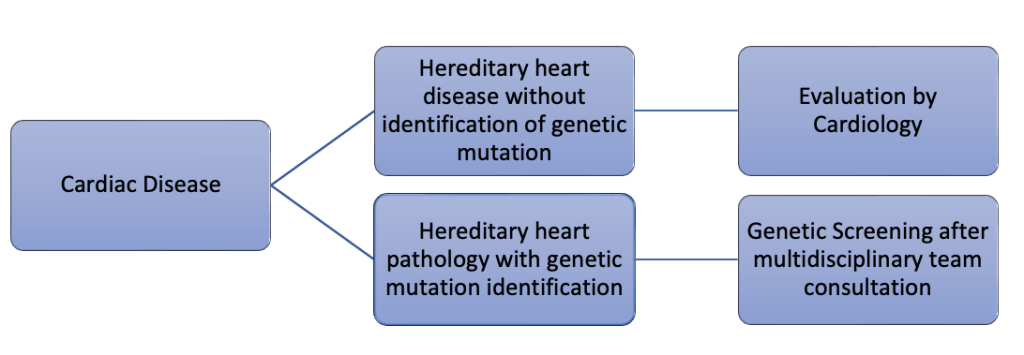SCD family members
- Home » Sudden Cardiac Death (SCD) » SCD family members
SCD family members
Family screening is essential whenever there is a diagnosis of hereditary or potentially hereditary cardiovascular disease. We establish an index case for the first patient in whom the diagnosis is established. Family screening must follow a cascade organization so that we are not carrying out unnecessary and potentially risky tests on family members who cannot present the disease; for example, a child should not be evaluated when the disease has been ruled out from the father/mother directly related to the patient with the same disease.
What kind of evaluation should family members undergo?
When the index case presents the diagnosis of a hereditary cardiac disease, all 1st degree relatives must be clinically evaluated. The subsequent study will depend on the underlying disease. In the study of cardiomyopathies (diseases of the heart muscle) imaging tests are fundamental while, for example, in an electrical heart disease, the electrocardiogram, Holter or stress test are more important. It is relevant to realize that the important thing is the evaluation of the family members, and any decision on the type of testing must be individualized.
When should family members have genetic testing?
Genetic tests should not be ordered indiscriminately, as there are often benign genetic variants that do not cause the disease. The request for genetic tests complies with international recommendations, in order to avoid establishing diseases where they do not exist. Therefore, genetic tests are requested from index patients by their cardiologists or in a post-mortem evaluation when indicated, depending on the pathology. When the genetic mutation is identified and has clinical value, this information can be used to carry out family screening in a multidisciplinary consultation where a geneticist has been included. Usually, there are changes in one or more genes, although more complex hereditary forms may exist. The type of hereditary transmission is very variable: it can be autosomal dominant (50% probability that a patient will transmit it to descendant and the inheritance of a single defective copy of a gene, either the maternal or the paternal copy, is sufficient to cause the disorder), autosomal recessive (the family member needs to inherit the mutation from the father and the mother to have the disease) and other forms rarer. In some cases, an autosomal dominant condition may result from a de novo variant in the gene and occurs in individuals with no history of the disorder in their family.
There are, however, many hereditary diseases in which it is not possible to identify the mutation in the patient even though it is present. In this case, if it were not possible to identify the genetic mutation in the index case, it would make no sense to conduct the genetic test in relatives.
Those carrying the genetic mutation may never manifest the disease. Therefore, it is not surprising that the baseline exams are normal, even if they are carriers of the genetic alteration, which is what in Medicine we call variable penetrance.

My relative died of sudden death. Do I have to be assessed?
You should be assessed if the result of the autopsy indicates hereditary heart disease. To do so, it is fundamentally necessary to carry out an autopsy, otherwise the opportunity to establish a diagnosis of a hereditary disease that other family members may have may be lost, and consequently, other cases of sudden death in the family may not be prevented. Availability of autopsy results varies from country to country. If you are in a country where the autopsy result is not sent to a medical team with the capacity to recruit family members, you should collect the result and discuss with your attending physician the need for the family members to be evaluated.
There are two autopsy results that imply the need for 1st-degree relatives to be evaluated: a diagnosis of a hereditary disease OR a normal autopsy (without relevant findings), which implies the possibility of having an electrical heart disease (which is not seen in the autopsy) and that is associated with the risk of sudden death in family members who also had it. A normal autopsy is not the end of the line for investigation! In such case, it is advisable to take a sample at autopsy to proceed for genetic testing.
